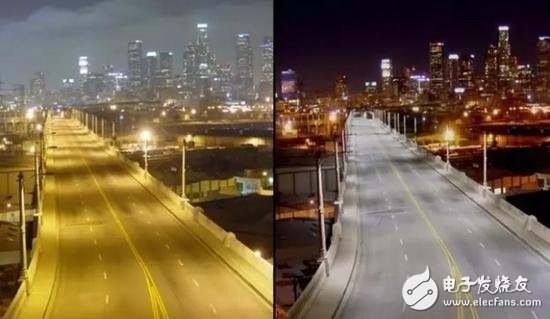
Privacy statement: Your privacy is very important to Us. Our company promises not to disclose your personal information to any external company with out your explicit permission.

Driving at night often requires a 12-point spirit, and a slight negligence can easily lead to an accident. According to statistics from the traffic control department, nighttime and early morning hours are key periods for frequent incidents. Poor vision, fatigue driving, and the use of far and near lights, etc., will affect the driver's driving status. However, there is also a nighttime driving hazard that has only appeared in the past decade, which is easily overlooked, that is, the blue light hazard caused by LED street lights.
In order to improve the vision, many urban roads, highways and viaducts have been equipped with LED street lights. Especially in busy roads, the setting of street lights greatly reduces the possibility of traffic accidents. Compared with the traditional high-pressure sodium lamp, LED street lamps have many advantages such as energy saving, low light decay, long life and low maintenance cost, but LED street lamps also have unavoidable defects - blue light hazard.

Blue light does not refer to blue light, but refers to high-energy short-wave blue light with a wavelength between 400nm and 480nm, which has extremely high penetrating power. The blue light in this wavelength will increase the amount of toxin in the macular area of the eye, the death of light-sensitive cells, the gradual decline of vision, and even induce blind eye disease, which seriously threatens our fundus health. Blue light can be seen everywhere in daily life, but the proportion is generally within the normal health range, and has little effect on vision. However, Blu-ray exists in a large number of artificial light sources such as LED screens, LED lights, fluorescent lights, etc., and it will feel "spicy eyes" when exposed for a long time, and it is difficult to recover from the eyes.
The American Medical Association (AMA) recently accepted a formal policy statement on street lighting: colder and darker. It stated in the statement that for outdoor lighting in the evening, especially street lighting, the color temperature should not exceed 3000 Kelvin (K). The higher the color temperature, the whiter the light, and the higher the blue light content, while the color temperature of the white LED bulb can usually reach 4000K-5000K, which contains higher blue light.
In addition to threatening the health of the fundus, white LED street lights can easily affect the driver's vision of driving. Due to the high energy content of blue light, the high incidence of fine particles in the air is high, and large brightness changes are likely to occur in the field of view during driving at night, causing visual discomfort and glare of loss of visibility. Like the high beam, it has a great influence on the driver's vision and visibility. If you don't pay attention, it will easily lead to traffic accidents.
On the other hand, the daily visible light line will form a focal length difference after focusing in the eye, which is the main reason for the formation of blurred vision, and the blue light injection will aggravate the focal distance difference and visual blur, which will easily lead to visual fatigue and affect. Driver's condition observation and driving attention. White LEDs suppress melatonin at night by five times more than conventional high-pressure sodium lamps. Inhibition of melatonin means that insomnia and circadian rhythms are disrupted.
If you look directly at the LEDs on your home appliance, you will soon feel the "spicy eyes" of Blu-ray. Just as the use of digital products for a long time, blue light will cause digital visual fatigue, and street lighting will bring the same impact, which brings hidden dangers to driving safety.
How to avoid the harm caused by driving blue light at night? In this latest policy statement, AMA encourages the use of lights with a color temperature of 3000K or less as outdoor lighting for roads and other locations. All LED lighting should be protected to minimize the effects on the human body and the environment. It is also recommended to reduce the brightness of LED street lights during off-peak hours.
For the driver, first of all, avoid long-term fatigue driving, maintain proper rest time, avoid physical fatigue and visual fatigue. In addition, if you are driving on a road with more street lights, it is best to keep a pair of anti-blue light glasses to reduce the damage of blue light to the eyes.
It is imperative to improve energy efficiency, but the glare caused by poor lighting and the physical risks such as disruption of circadian rhythm must also be minimized. As long as you can get a reasonable design, I believe that LED technology can bring the best solution of both.
Письмо этому поставщику

Privacy statement: Your privacy is very important to Us. Our company promises not to disclose your personal information to any external company with out your explicit permission.

Fill in more information so that we can get in touch with you faster
Privacy statement: Your privacy is very important to Us. Our company promises not to disclose your personal information to any external company with out your explicit permission.